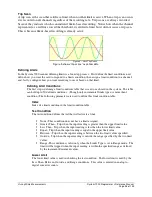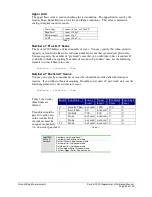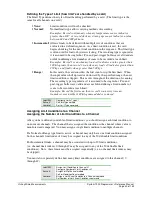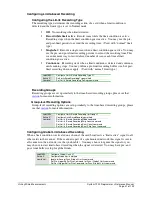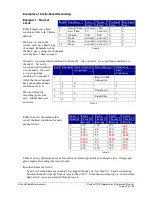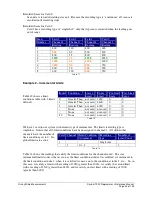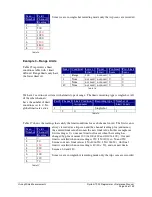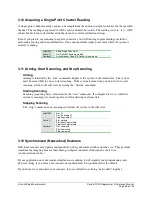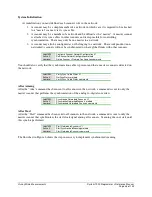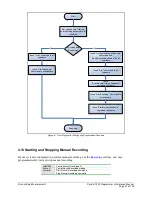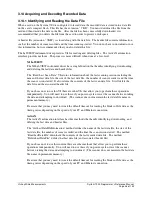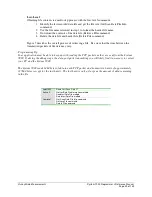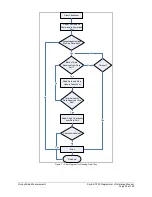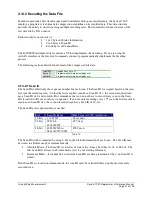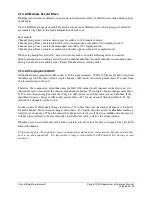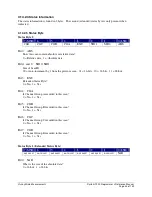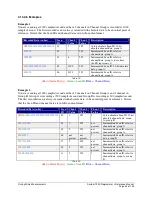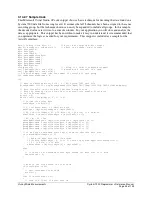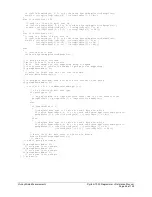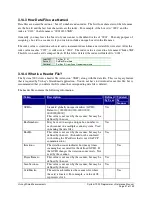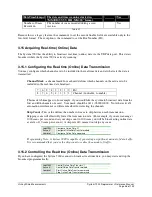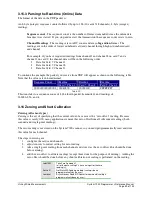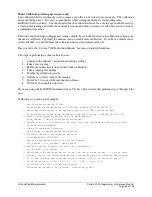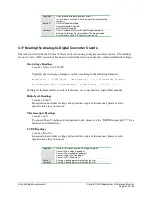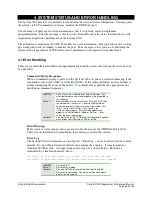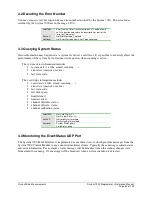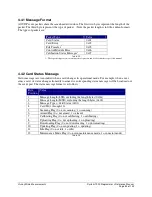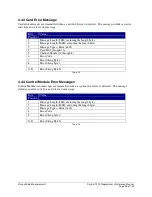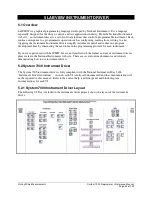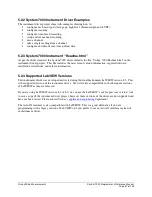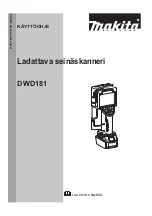
Vishay Micro-Measurements
System 7000 Programmer’s Reference Manual
Page 42 of 142
3.14.2.2
Multiple Record Rates
Multiple record rates are defined as one group of channels recorded at a different rate than another group
of channels.
Up to 4 different groups of channels are allowed to record at different rates, which groups are recorded
are indicated by 4 bits in the Status Information of each scan.
For example:
Channel group A may contain strain gages recorded at 1,000 samples/second.
Channel group B may contain high level cards and transducers recorded at 100 samples/second.
Channel group C may contain thermocouples recorded at 10 samples/second.
Channel group D may contain a combination of other types recorded at 1 sample/second.
When using multiple record rates, data is written for each scan in the following order (as needed):
Group A channels in ascending order (based on channel number), Group B channels in ascending order,
Group C channels in ascending order, Group D channels in ascending order.
3.14.2.3
Varying Data Width
All channel data is sampled in A/D counts as 32-bit signed integers. While 32 bits are needed to represent
the full range of A/D counts, often a single channel’s A/D counts do not jump more than 127 counts from
one recorded scan to the next.
Therefore, the compression algorithm stores the full 32-bit values for all channels on the first scan. On
subsequent scans, it monitors the amount each channel changes. If no single channel changes more than
±
127 counts, then it simply records the
change
in A/D counts (as an 8-bit value) for each channel. If the
algorithm detects a change in A/D counts greater than +-127 for
any
channel, then the absolute (32 bit)
value for
all
channels will be stored.
In other words, if all channels change less than +-127 counts then only the amount of change is recorded
for each channel. If any channel changes more than +-127 counts, then the actual (or
absolute
) reading is
stored for each channel. When the amount of change is stored it is referred to as
relative
data because we
will have to refer back to the most recently stored absolute value to derive the actual reading.
Whether a given scan holds absolute (32-bit) or relative (8-bit) values for data is designated by a bit in the
Status information.
Programming note: Though data compression has many advantages, it also means that all raw data files
have to be read sequentially. It is impossible to jump to scan number 10,000 without first starting at scan
number 1.

